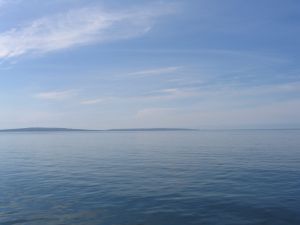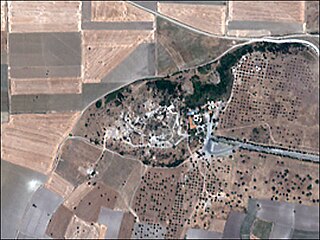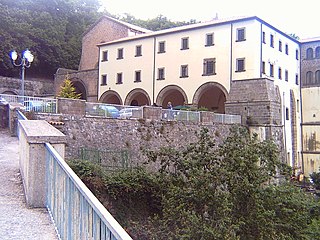The 1430s BC is a decade which lasted from 1439 BC to 1430 BC.
Contents
| Millennium: | 2nd millennium BC |
| Centuries: | |
| Decades: | |
| Years: |
|
| Categories: |
The 1430s BC is a decade which lasted from 1439 BC to 1430 BC.
| Millennium: | 2nd millennium BC |
| Centuries: | |
| Decades: | |
| Years: |
|
| Categories: |
Alexander I may refer to:

The 15th century BC is a century which lasted from 1500 BC to 1401 BC.
Philip(p) I may refer to:

Smederevo is a city and the administrative center of the Podunavlje District in eastern Serbia. It is situated on the right bank of the Danube, about 45 kilometres downstream of the Serbian capital, Belgrade.

Chalkidiki also spelled Chalkidike, Chalcidice, Khalkidhiki, or Halkidiki, is a peninsula and regional unit of Greece, part of the region of Central Macedonia, in the geographic region of Macedonia in Northern Greece. The autonomous Mount Athos region constitutes the easternmost part of the peninsula, but not of the regional unit.
Tudhaliya is the name of several Hittite kings:

Ocean exploration is a part of oceanography describing the exploration of ocean surfaces. Notable explorations were undertaken by the Greeks, the Romans, the Polynesians, the Phoenicians, Phytheas, Herodotus, the Vikings, the Portuguese and Muslims. Scientific investigations began with early scientists such as James Cook, Charles Darwin, and Edmund Halley. Ocean exploration itself coincided with the developments in shipbuilding, diving, navigation, depth, measurement, exploration, and cartography.

Hisarlik, often spelled Hissarlik, is the Turkish name for an ancient city located in what is known historically as Anatolia. It is part of Çanakkale, Turkey. The archaeological site lies approximately 6.5 kilometres (4.0 mi) from the Aegean Sea and about the same distance from the Dardanelles. The site is a partial tell, or artificial hill, elevated in layers over an original site. In this case the original site was already elevated, being the west end of a ridge projecting in an east–west direction from a mountain range.

Mochlos is a modern island in the Gulf of Mirabello in eastern Crete, and the archaeological site of an ancient Minoan settlement. There is evidence that Mochlos was not an island in Minoan times, but was attached to the mainland and acted as an eastern harbor.
The Kaska were a loosely affiliated Bronze Age non-Indo-European tribal people, who spoke the unclassified Kaskian language and lived in mountainous East Pontic Anatolia, known from Hittite sources. They lived in the mountainous region between the core Hittite region in eastern Anatolia and the Black Sea, and are cited as the reason that the later Hittite Empire never extended northward to that area.

Lukovit is a town in northern Bulgaria, part of Lovech Province. It is situated on both banks of the Zlatna Panega between the Danubian Plain and the foot of Stara Planina. As of December 2009, the town has a population of 9,630 inhabitants.

Ashtown Castle is a tower house in the Phoenix Park in Dublin, Ireland.

Roccamonfina is a comune (municipality) in the Province of Caserta in the Italian region Campania, located about 60 kilometres (37 mi) northwest of Naples and about 40 kilometres (25 mi) northwest of Caserta.
Enlil-Nasir II was the king of Assyria from c. 1430 BC to 1425 BC. The brother of Ashur-nadin-ahhe I, he seized the throne in a successful coup.

The Chalkotheke was a structure on the Athenian Acropolis, Greece. Its name and function are only known from 4th century BC inscriptions. One decree orders the listing of all objects stored in the Chalkotheke and the erection of a stele inscribed with that list in front of the building.
The table of years in architecture is a tabular display of all years in architecture, for overview and quick navigation to any year.

The Continental XI-1430 Hyper engine was a liquid-cooled aircraft engine developed in the United States by a partnership between the US Army Air Corps and Continental Motors. It was the "official" result of the USAAC's hyper engine efforts that started in 1932, but never entered widespread production as it was not better than other available engines when it finally matured. In 1939, the I-1430-3 was designated as the engine to power the Curtiss XP-55, an extremely radical pusher-engine fighter design that would not reach production.
Wedge Pass, also known as Billygoat Pass, 1430 m (4692 ft), is a mountain pass in the northern Garibaldi Ranges, the southwesternmost subdivisions of the Pacific Ranges of the Coast Mountains in British Columbia, Canada. Located immediately on the southern flank of Wedge Mountain and to the immediate north of the Spearhead Range, site of the Blackcomb half of the Whistler Blackcomb Ski Area, it connects the head of Wedge Creek (W), a tributary of the Green River with those of Billgoat Creek (E), a tributary of the Lillooet River. The pass is within Garibaldi Provincial Park and has no road access.